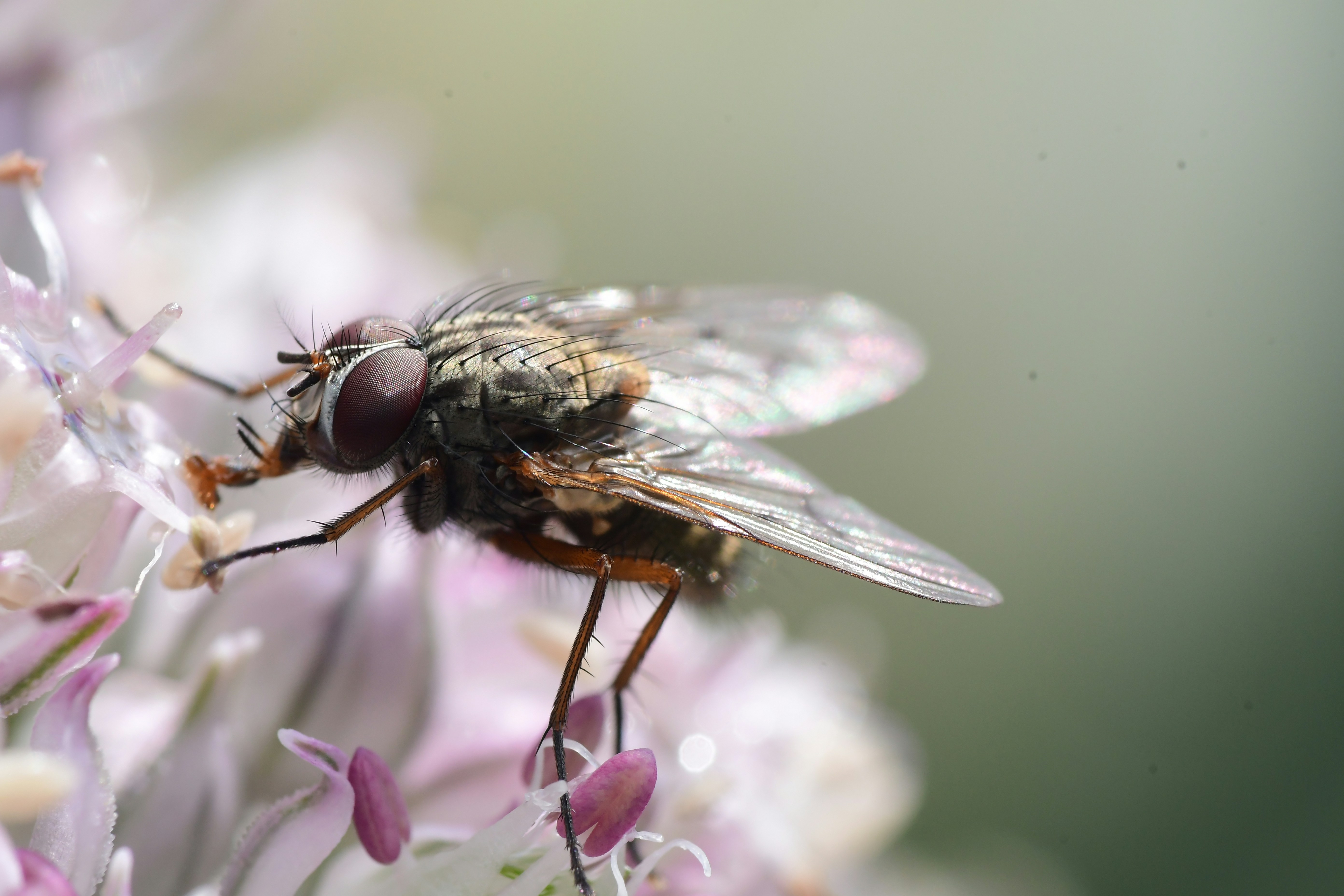
Understanding Small Flies and Their Habits
Small flies, including fruit flies, phorid flies, cheese skippers, and moth flies, are common pests in homes, restaurants, and food storage areas. These are tiny pests that can breed in organic matter, moist environments, and decaying food sources, making sanitation and proactive management crucial for effective control.
Common Types of Small Flies
Fruit Flies
- Habitat: Overripe and decaying fruits, fermenting organic material.
- Breeding Grounds: Unwashed fruits, standing water with organic debris.
- Prevention: Store fruits properly, clean drains, and eliminate food waste.
Phorid Flies
- Habitat: Moist environments, including drains and decaying organic matter.
- Breeding Grounds: Floor drains, trash receptacles, cracks in flooring.
- Prevention: Regular sanitation of drains, proper waste disposal.
Cheese Skippers
- Habitat: Cured meats, cheese, and processed meat products.
- Breeding Grounds: Food processing facilities, improperly stored food.
- Prevention: Store food properly, maintain strict hygiene practices.
Moth Flies
- Habitat: Moist environments, particularly in drains and plumbing.
- Breeding Grounds: Standing water, wet organic matter.
- Prevention: Fix leaks, clean drains regularly, reduce moisture.
Small Flies vs. Gnats: What’s the Difference?
While small flies and gnats may look similar at first glance, they have different habitats, behaviors, and control methods.
| Feature | Small Flies | Gnats |
|---|---|---|
| Size & Appearance | Typically 1/8 inch, rounder bodies, slow-flying | Smaller, slender bodies, long legs, mosquito-like |
| Common Types | Fruit flies, phorid flies, cheese skippers, moth flies | Fungus gnats, drain flies, black gnats |
| Breeding Grounds | Decaying food, trash, drains, standing water | Damp soil, overwatered plants, organic debris |
| Primary Diet | Feed on organic material and fermenting substances | Mostly feed on fungi, plant roots, and decomposing matter |
| Flight Pattern | Slow, hovering around food or drains | Erratic flying, often near plants or damp areas |
| Control Methods | Improve sanitation, remove food sources, use traps | Reduce moisture in soil, improve air circulation, allow soil to dry out before watering |
How to Tell If You Have Small Flies or Gnats
- If they hover around fruit, garbage, or drains, you likely have small flies.
- If they appear near indoor plants or damp soil, you’re probably dealing with gnats.
- If they seem to emerge from plumbing or bathrooms, they could be moth flies (often mistaken for drain gnats).
Understanding these differences is essential for choosing the right control strategy.
How to Control Small Fly infestations
Step 1: Identify and Eliminate Breeding Sites
- Inspect areas where organic debris may be accumulating, such as floor drains, trash bins, and food storage areas.
- Check for water leaks that may create damp conditions ideal for fly breeding.
Step 2: Use Traps and Bait Stations
- Set up bait stations near breeding areas using card stock or wood treated with plant-oil fly bait.
- Traps with glue can be enhanced by spraying them with apple cider vinegar, a known fly attractant.
Step 3: Improve Sanitation Practices
- Clean floor drains using knives or a small spatula to remove built-up organic debris.
- Regularly empty garbage bins and clean surfaces to prevent infestations.
Step 4: Monitor and Maintain Preventive Measures
- Arrange monitoring traps in a grid pattern to pinpoint high-fly-activity areas.
- Keep indoor plants and atriums free from excess moisture.
- Conduct frequent inspections and remove potential fly breeding sources.
By following these preventive measures and control strategies, you can effectively manage fly infestations and maintain a cleaner, pest-free environment.
Final Thoughts
Small flies can be a nuisance, but with proper identification, sanitation, and control methods, they can be managed effectively. Regular cleaning, proper food storage, and proactive fly control measures are essential to keeping these pests at bay.
Need Help with Fly Control?
If you have a persistent fly problem, consider contacting Fox Valley Environmental Pest Control for advice and help with identifying the source. We are available around the clock at 630-513-8120!

